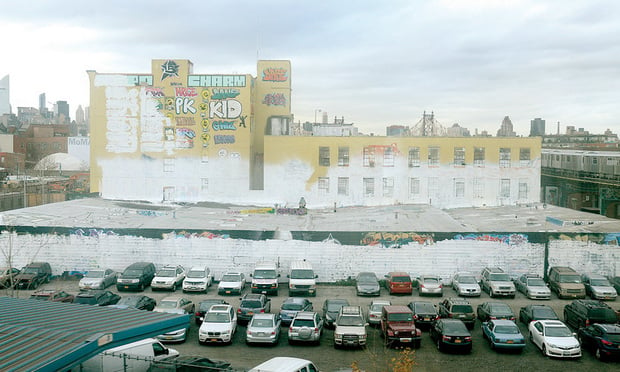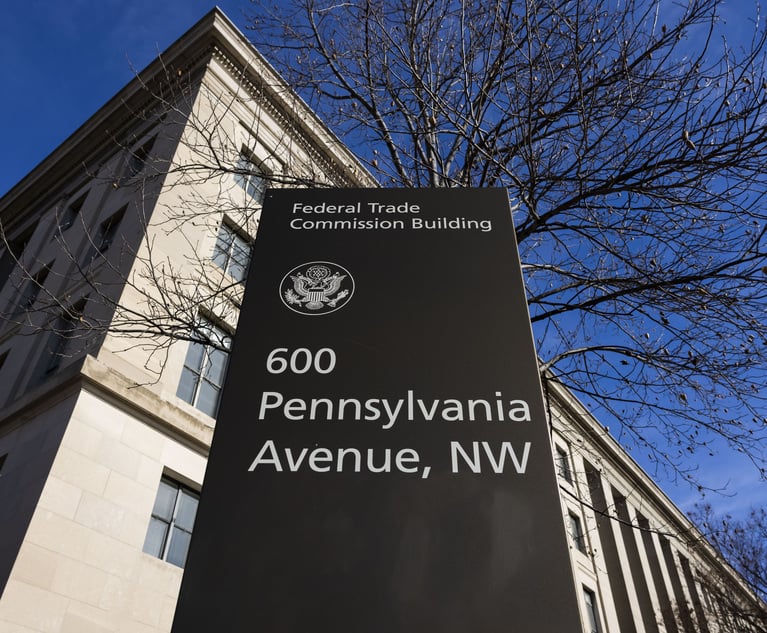2nd Circuit Upholds $6.75M in Damages to Street Artists for Destroyed Artworks
On appeal to the Second Circuit, the case centered on whether the pieces at 5Pointz could qualify as having achieved "recognized stature," a term which until now has largely eluded a precise definition.
February 20, 2020 at 05:47 PM
5 minute read
 5Pointz after being covered in whitewash.
5Pointz after being covered in whitewash.
The U.S. Court of Appeals for the Second Circuit on Thursday upheld a nearly $7 million ruling against a New York real estate developer who ordered the destruction of a popular art exhibition space to make way for a luxury apartment building.
A three-judge panel of the Manhattan-based appeals court ruled that Gerald Wolkoff had "willfully" violated the Visual Artists Rights Act of 1990, when he sent a team of workers in 2013 to "whitewash" dozens of graffiti artworks at the 5Pointz complex in Long Island City, Queens, which had garnered worldwide renown for its striking visual displays.
At the time, Wolkoff, who purchased the property in 1970, was locked in litigation with 5Pointz curator, Jonathan Cohen, as well as several other artists who had sued in Brooklyn federal court to preserve their art.
U.S. District Judge Frederic Block had denied the artists an injunction but emphasized that the VARA issue remained unresolved. Despite warnings that preemptive action could expose him to damages, Wolkoff nonetheless ordered the artworks removed in the eight days it took for the court to enter its ruling.
Block later ruled that 45 of the mostly temporary installations at 5Pointz had achieved "recognized stature" under VARA, which requires artists' approval before their work can be destroyed. Block, who called the whitewashing an "act of pure pique and revenge," in 2018 awarded $150,000 in statutory damages for each of the destroyed works, the maximum allowed under the statute.
On appeal to the Second Circuit, the case centered on whether the pieces at 5Pointz could qualify as having achieved "recognized stature," a term which until now has largely eluded a precise definition.
Wolkoff and his Jones Day attorneys had argued that the temporary nature of the works, combined with Cohen's own philosophy of "creative destruction," meant that the artists themselves would also be in violation of the statute when they painted over each other's work.
The Second Circuit, however, said VARA did not distinguish between permanent and temporary works, and cited a recent history of "vanishing" artworks that had achieved levels of cultural significance, ranging from Christo's "The Gates" in Central Park to Banksy's famed "Girl with a Balloon" piece of street art, which self-destructed after selling for $1.4 million at Sotheby's.
In its ruling, the panel held that protected status for works of "recognized stature" hinge on whether the pieces are "of high quality, status or caliber," as determined by the artistic community, which includes art historians, critics, curators and prominent artists.
The most important component of stature will "generally be the artistic quality" of a piece, Second Circuit Judge Barrington D. Parker wrote of behalf of the court, offering an example that criticized the work of the French impressionist Claude Monet.
"Since recognized stature is necessarily a fluid concept, we can conceive of circumstances under which, for example, a 'poor' work by a highly regarded artist—e.g., anything by Monet—nonetheless merits protection from destruction under VARA," Parker wrote in the 32-page opinion.
"This approach helps to ensure that VARA protects 'the public interest in preserving [the] nation's culture,'" Parker said. "This approach also ensures that the personal judgment of the court is not the determinative factor in the court's analysis."
The ruling also rejected Wolkoff's arguments that Block had abused his discretion in reaching his $6.75 million judgment. The record below, the court found, was replete with evidence that Wolkoff, a "sophisticated" real estate developer, had acted willfully in destroying the artwork without any legitimate reason to do so.
"The district court found that Wolkoff could have allowed the artwork to remain visible until demolition began, giving the artists time to photograph or to recover their work. Instead, he destroyed the work immediately after the district court denied the preliminary injunction and before the district court could finalize its promised written opinion," Parker wrote.
"The district court was entitled to conclude, based on this record, that Wolkoff acted willfully and was liable for enhanced statutory damages," he said.
An attorney for Wolkoff was not immediately available to comment Thursday afternoon.
Eric Baum, who represented the artists, said his clients were "thankful and humbled" by the ruling.
"The finding is a clear indication these artists' work is important and should be respected," said Baum, of Eisenberg & Baum in Manhattan. "It is also a clear message that nobody is above the law and everyone must be held accountable for their actions."
Cohen and the other 5Pointz artists were represented by Baum and Juyoun Han of Eisenberg & Baum and Christopher Robinson of Rottenberg Lipman Rich.
Wolkoff was represented by Meir Feder of Jones Day in New York.
The case was captioned Castillo v. G&M Realty.
Read More:
Judge Denies New Trial in Street Art Case, Faults Property Owner for 'Misleading' Court
This content has been archived. It is available through our partners, LexisNexis® and Bloomberg Law.
To view this content, please continue to their sites.
Not a Lexis Subscriber?
Subscribe Now
Not a Bloomberg Law Subscriber?
Subscribe Now
NOT FOR REPRINT
© 2025 ALM Global, LLC, All Rights Reserved. Request academic re-use from www.copyright.com. All other uses, submit a request to [email protected]. For more information visit Asset & Logo Licensing.
You Might Like
View All
What Businesses Need to Know About Anticipated FTC Leadership Changes
7 minute read
Judge Denies Retrial Bid by Ex-U.S. Sen. Menendez Over Evidentiary Error

Law Firms Mentioned
Trending Stories
Who Got The Work
J. Brugh Lower of Gibbons has entered an appearance for industrial equipment supplier Devco Corporation in a pending trademark infringement lawsuit. The suit, accusing the defendant of selling knock-off Graco products, was filed Dec. 18 in New Jersey District Court by Rivkin Radler on behalf of Graco Inc. and Graco Minnesota. The case, assigned to U.S. District Judge Zahid N. Quraishi, is 3:24-cv-11294, Graco Inc. et al v. Devco Corporation.
Who Got The Work
Rebecca Maller-Stein and Kent A. Yalowitz of Arnold & Porter Kaye Scholer have entered their appearances for Hanaco Venture Capital and its executives, Lior Prosor and David Frankel, in a pending securities lawsuit. The action, filed on Dec. 24 in New York Southern District Court by Zell, Aron & Co. on behalf of Goldeneye Advisors, accuses the defendants of negligently and fraudulently managing the plaintiff's $1 million investment. The case, assigned to U.S. District Judge Vernon S. Broderick, is 1:24-cv-09918, Goldeneye Advisors, LLC v. Hanaco Venture Capital, Ltd. et al.
Who Got The Work
Attorneys from A&O Shearman has stepped in as defense counsel for Toronto-Dominion Bank and other defendants in a pending securities class action. The suit, filed Dec. 11 in New York Southern District Court by Bleichmar Fonti & Auld, accuses the defendants of concealing the bank's 'pervasive' deficiencies in regards to its compliance with the Bank Secrecy Act and the quality of its anti-money laundering controls. The case, assigned to U.S. District Judge Arun Subramanian, is 1:24-cv-09445, Gonzalez v. The Toronto-Dominion Bank et al.
Who Got The Work
Crown Castle International, a Pennsylvania company providing shared communications infrastructure, has turned to Luke D. Wolf of Gordon Rees Scully Mansukhani to fend off a pending breach-of-contract lawsuit. The court action, filed Nov. 25 in Michigan Eastern District Court by Hooper Hathaway PC on behalf of The Town Residences LLC, accuses Crown Castle of failing to transfer approximately $30,000 in utility payments from T-Mobile in breach of a roof-top lease and assignment agreement. The case, assigned to U.S. District Judge Susan K. Declercq, is 2:24-cv-13131, The Town Residences LLC v. T-Mobile US, Inc. et al.
Who Got The Work
Wilfred P. Coronato and Daniel M. Schwartz of McCarter & English have stepped in as defense counsel to Electrolux Home Products Inc. in a pending product liability lawsuit. The court action, filed Nov. 26 in New York Eastern District Court by Poulos Lopiccolo PC and Nagel Rice LLP on behalf of David Stern, alleges that the defendant's refrigerators’ drawers and shelving repeatedly break and fall apart within months after purchase. The case, assigned to U.S. District Judge Joan M. Azrack, is 2:24-cv-08204, Stern v. Electrolux Home Products, Inc.
Featured Firms
Law Offices of Gary Martin Hays & Associates, P.C.
(470) 294-1674
Law Offices of Mark E. Salomone
(857) 444-6468
Smith & Hassler
(713) 739-1250







